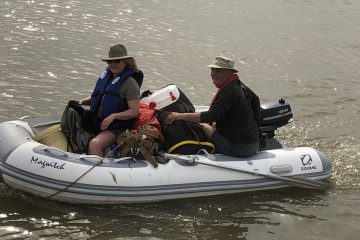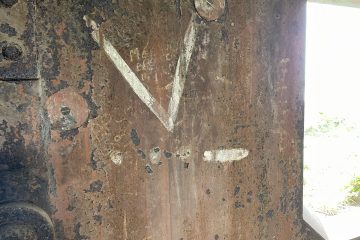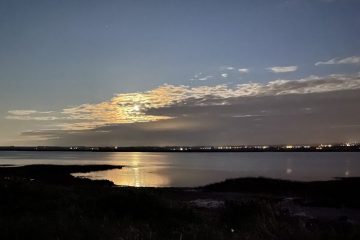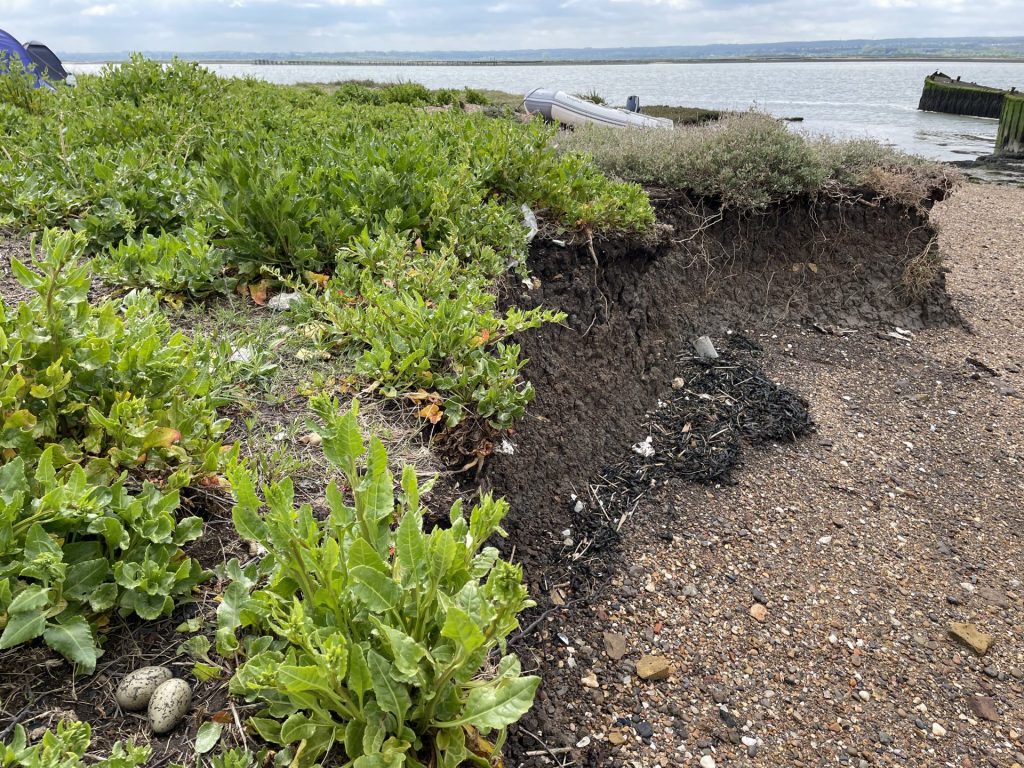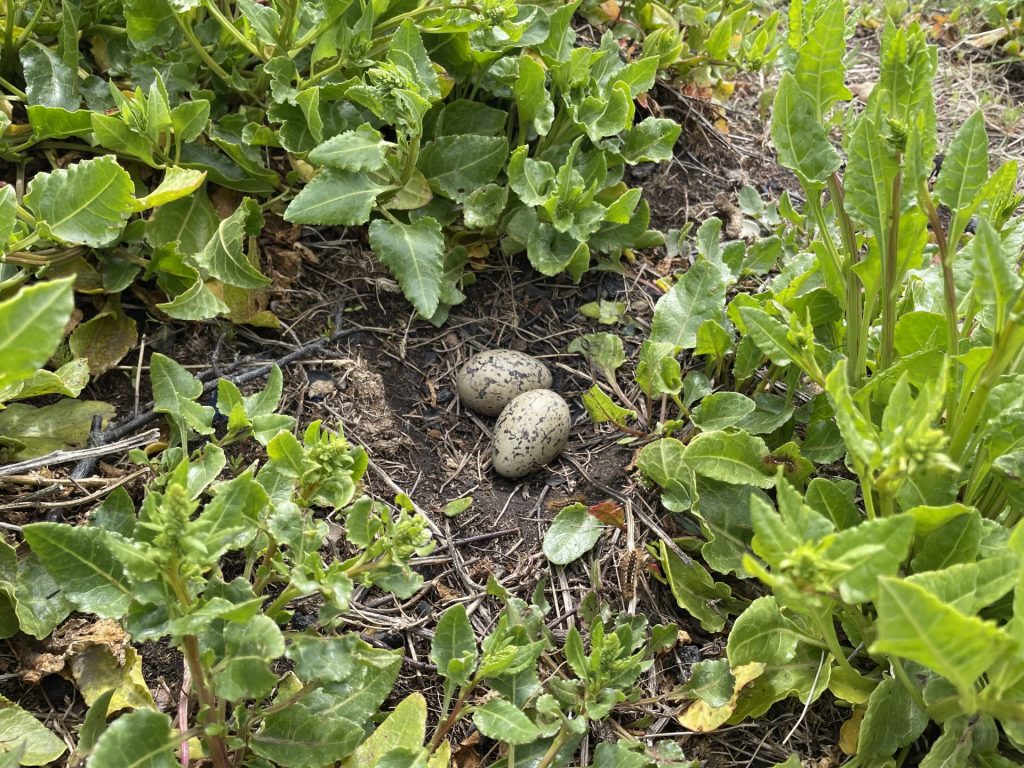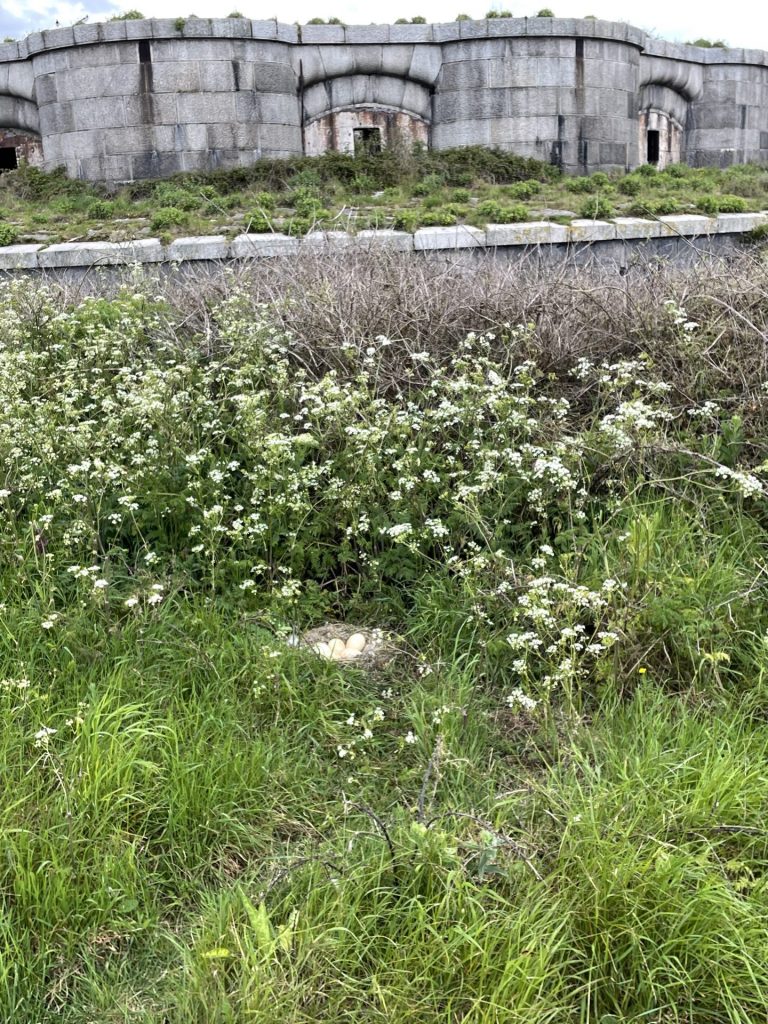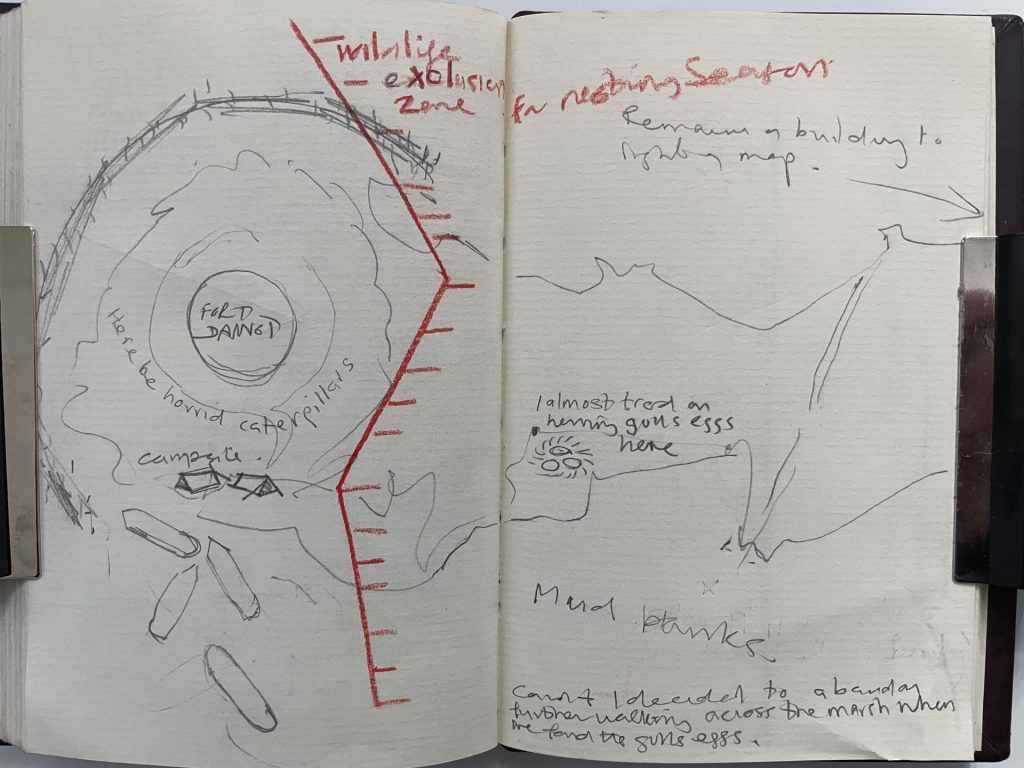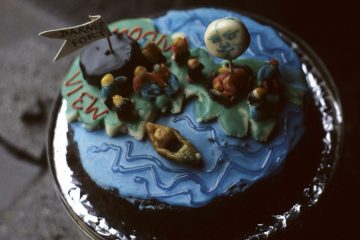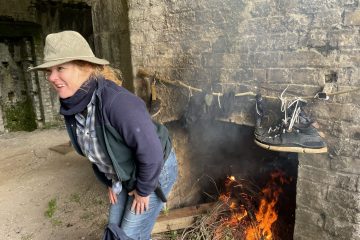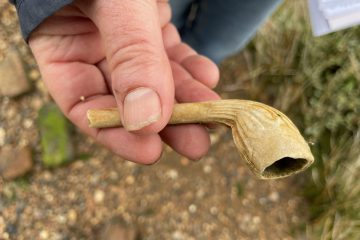Emigration Control
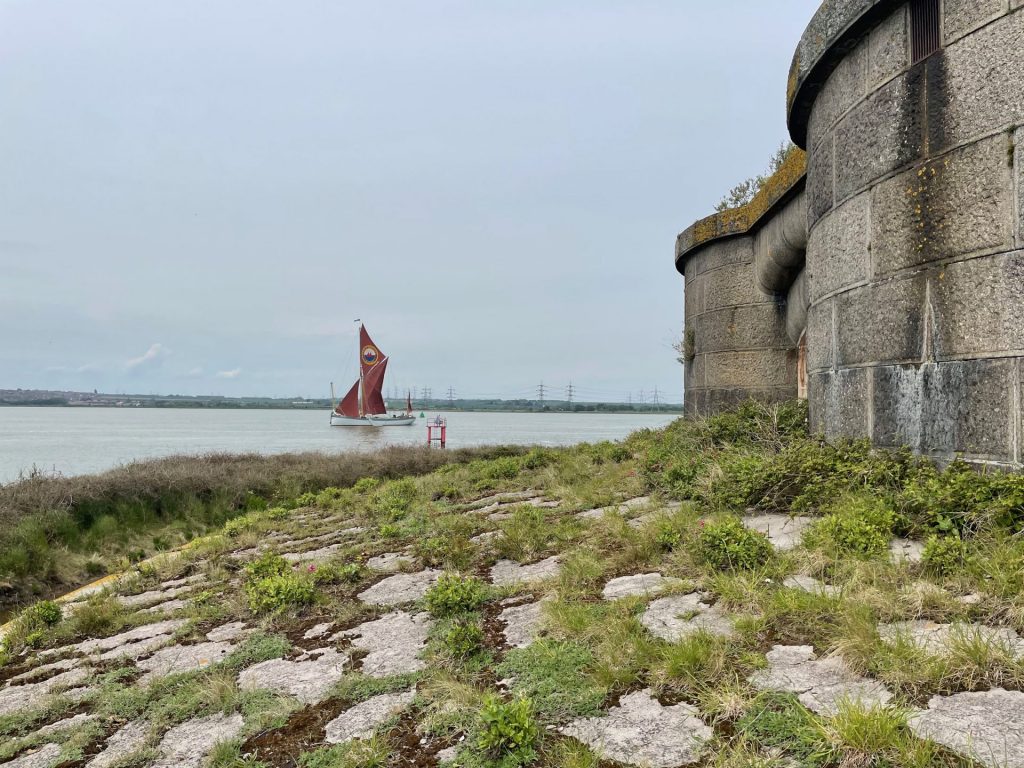
The Blue Mermaid had just headed up river as we began to carefully stow all our kit into Magwitch, examining every item for the unwelcome brown tailed moth caterpillars encountered in huge numbers on Darnet. My arms, neck and legs were already beginning to show signs of the skin irritation caused by their toxic hairs, as Carol and I vigorously shook our tents and quickly packed them – to prevent any re-infestation near ‘emigration control’ on the narrow strip of shingle where Magwitch was waiting and where we made our leave.
Looking back from just offshore, we could see much of the flora around the fort had been devoured. The white cloud of hawthorn flowers I remember wrapped about the curve of the fort entrance on my last visit in 1998, looks now like a thing of the past. The entire thicket has been eaten to death and blossom replaced by cottony communal caterpillar tents woven about their twigs. Other plants were so densely covered in caterpillars they fell off leaves for lack of room. I saw scores falling into the water surrounding the fort where their long hairs kept them afloat, before drifting to shore and tenaciously climbing back over the mud to start eating again. One or two even tried eating me. There have been other documented outbreaks like this, but their numbers in consequent years decline as nature somehow redresses the balance.
It makes me wonder about our own viral spread across the planet as our 7.5 billion souls are predicted to increase to over 9 billion in the next 30 years unless we learn some self control or a Gaian spirit finds other ways to govern us. Is Covid19 part of nature’s master plan I thought, as I increased the throttle to counter a turning tide in Gillingham Reach and where we caught up with the Blue Mermaid.
She was anchored not far from the rusty John H Amos steam paddle tug boat, which has been awaiting restoration on the waterside for many years. I was put in mind of JMW Turner’s painting ‘The Fighting Temeraire’ of 1838, where a ghostly veteran sailing ship from the Battle of Trafalgar, is being towed to be broken up by a fiery steam tug in an allegory of the modern world replacing the old; but on this bit of the Medway in 2021 sail has outlived steam, wind outlasted coal.
We could have used a sail later, when the engine stopped for want of petrol and we had a frantic paddle to a nearby buoy to refuel. Then suddenly it seemed, No8 Slip was off the port bow and we were almost back. We could have both happily stayed down river for far longer and ‘Escaping with Magwitch 2’ is going into our diaries soon – but in a season with no caterpillars and no nesting birds.
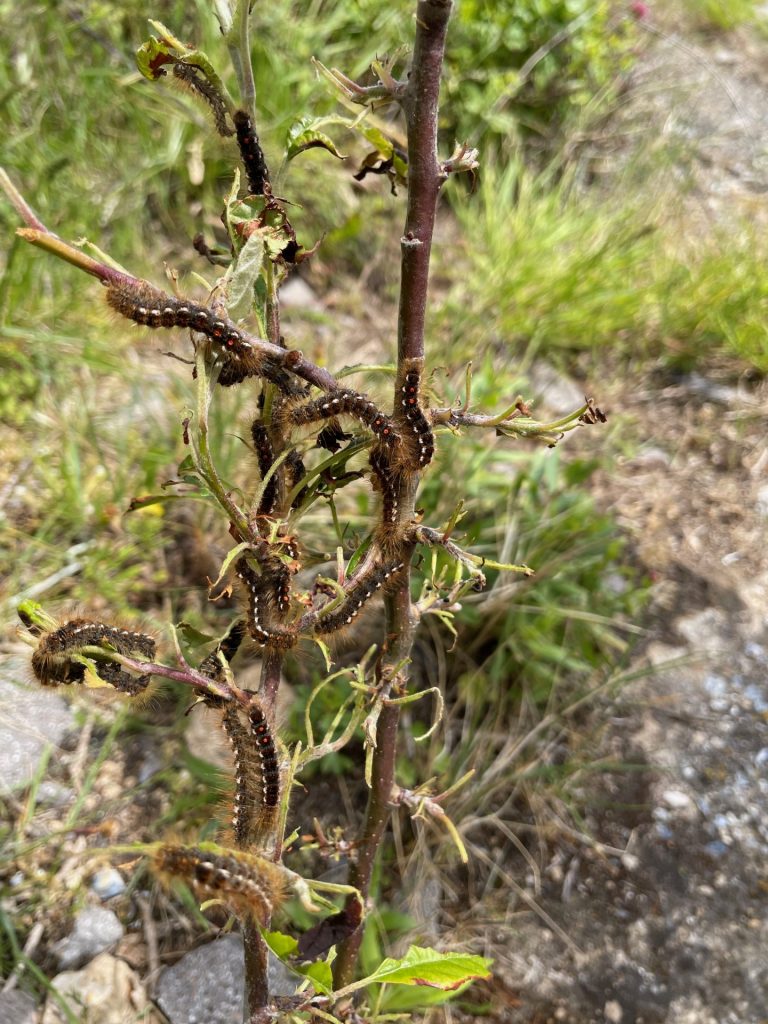
Victory
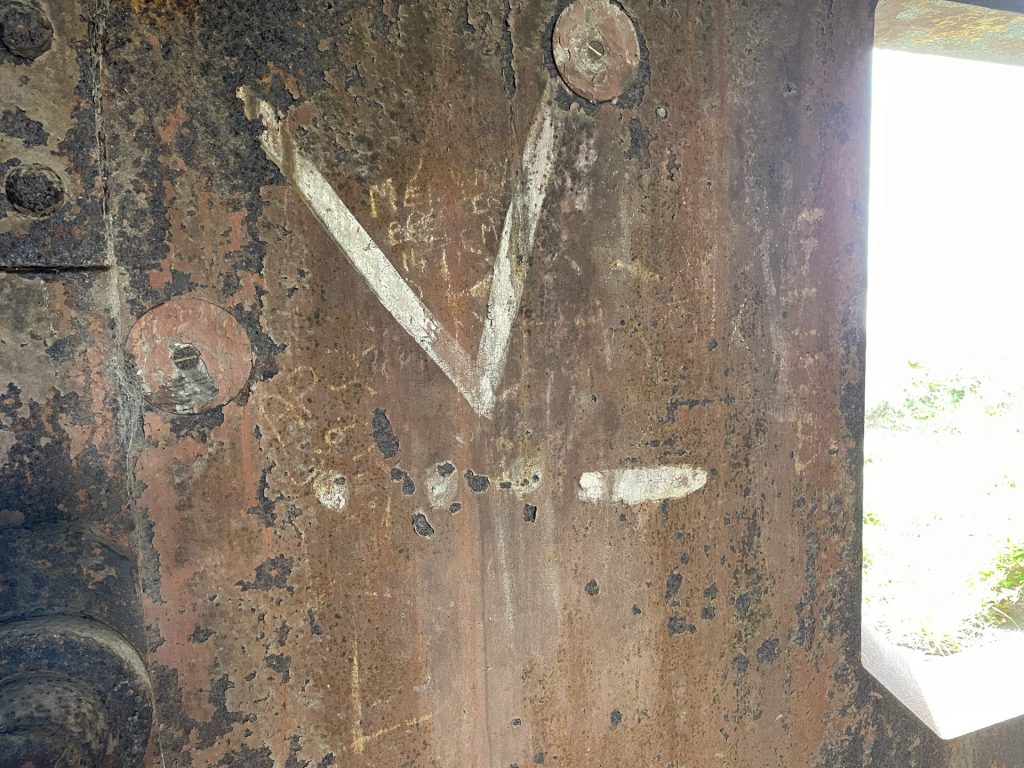
Darnet Fort is on the edge of the deep water channel used by all the boats and ships using the docks, moorings and marinas of the Medway and I enjoy watching them pass, whilst gazing out through a casement window of 10 inch thick steel daubed with a dot, dot, dot, dash and V for victory. The morse code reference probably dates it as a leaving present from the Observation Corps stationed here in WW2 when they left their isolated outpost for a final time after victory in 1945.
It’s easy to imagine Nelson’s flagship HMS Victory passing this spot en-route from the old Royal Dockyard in Chatham (where she was built and repaired) to Cape Trafalgar in 1805 for another famous victory. Meanwhile the opening ‘da – da – da – daaa’ of Beethoven’s 5th Symphony, which was written at around the same time, has got annoyingly lodged in my mind and won’t go away.
I can remember this same ‘graffiti’ from my visits in 1998 when I stepped outside to photograph a V formation of Canada Geese. After contemplating the meaning of victory, winning, success and achievement, it made me wonder more about exactly what in the world is being lost…
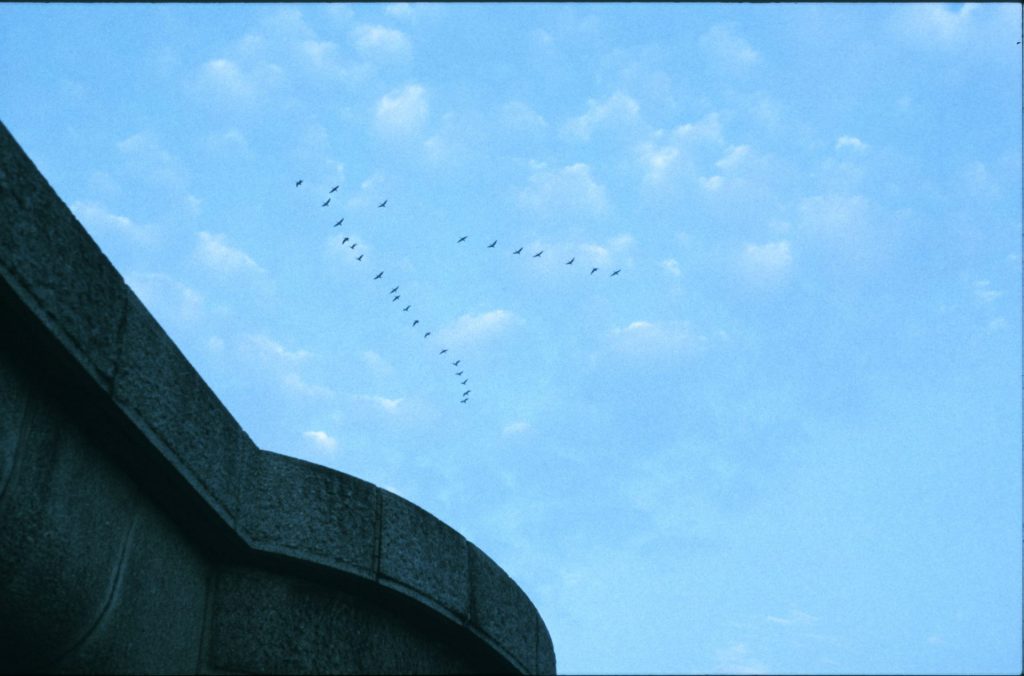
All Night Vigil
I was awake all night, first following the Moon (see the instagram feed), before transferring allegiance to the sun, which finally showed above the horizon at around 5am and threw its pink glow onto the grey granite interior of the fort. Bird song from the marsh without, had its counterpoint of blackbird and pigeon calls from within, with no breath of wind to interrupt or distort. I have hours ‘in the can’ to play with 🙂
Nests in Peril on the Sea (and land)
I came close to crushing a clutch of herring gull eggs for the second time in eight years today, while Carol and I were exploring the perimeter of the fort on Darnet Island (The first time was on the Beaulieu River in 2013 when I was planning the live-work with nature project that became the Exbury Egg – www.exburyegg.me). I managed (both times) to step away, but I now can’t stop thinking again about the fragility of both these nesting sites and of nature in general, as we bestride the planet in our great size nines.
As sea levels rise and south east England slowly dips into the sea, the lower more remote parts of this and other nearby marshes frequently go under on high spring tides. It was particularly affecting to watch and hear the cries of over 200 pairs of gulls on Bishops Ness off to the east, as today’s flood tide washed through and over their nests. They settled down as the tide went out, but Carol’s more expert view than mine is that they will now have to start again. Yet there are high tides every month and the climate change we create will drive them higher.
Such is the pressure on these poor creatures that they are now nesting on the higher ground more frequently visited by people. What to do about the eggs we found today? They were still warm. Will the adults return? We kept finding more, ever closer to the fort itself and even upon it (we think the oyster catchers have colonised the roof). Should we even be here at all? We need to find a good and effective answer.
Moon Views
I couldn’t sleep more that a few winks last night as I was in thrall to the full moon once more; from its rising (a little blurry, unfocused and orange) to a shining ‘star’ brightening the heavens and touching the land and river with cool, clear light as it drew the tide in. With tide, the ships came as they always have. I remembered a drawing made on this very spot, of another full moon one cold December in 1997, when a coaster passed by with a festive tree attached to the foremast, full of sparkling coloured lists. Later, in September the following year, I invited a small group of people to join me to celebrate the full moon and was brought the gift of an amazing cake to mark the moment. Happy days… and nights.

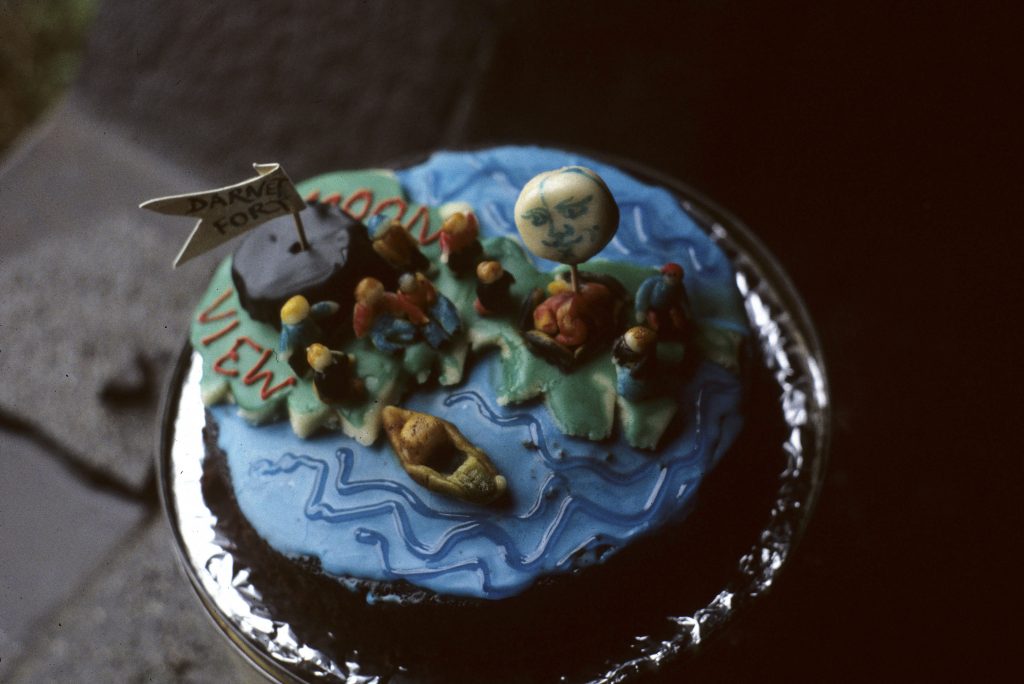
Watching the Pigeons Watching us
Day 3 10am May 26
The pigeons turn calm appraising eyes our way from roosts in different holes and gutters along the fort’s inner rim and I’m reminded of early scenes from Hitchcock’s The Birds – sometime before the gulls arrive to seriously revolt against the good folks of Bodega Bay, California and, I guess, all humanity in general. (Tippi Hedron should never have taken that pair of caged lovebirds there – it was a distinct provocation). Meanwhile here in our fort just across from Bishop’s Ness in north Kent (the current home for around 200 pairs of nesting gulls), Carol spotted a kestrel heading down a 12 inch drainage pipe just a few feet from the pigeons; who it has to be said seemed far more wary of us than of it. Are we ever to be so unwelcome everywhere, to all other life?
Feeling the Heat
Day 2 May 25 around 1pm
We have just arrived here on Darnet Island after being chased all the way from Hoo by a sudden squall that seemed to to change direction simply to pursue poor Magwitch across the water. We arrived wet and shivering and shivered more at the thought of having to collect dry kindling to start a fire. It was therefore with great gratitude to previous unknown explorers, that we dicovered that the job had been done for us. We simply needed a match. When we come to leave ourselves, we will be returning the favour.

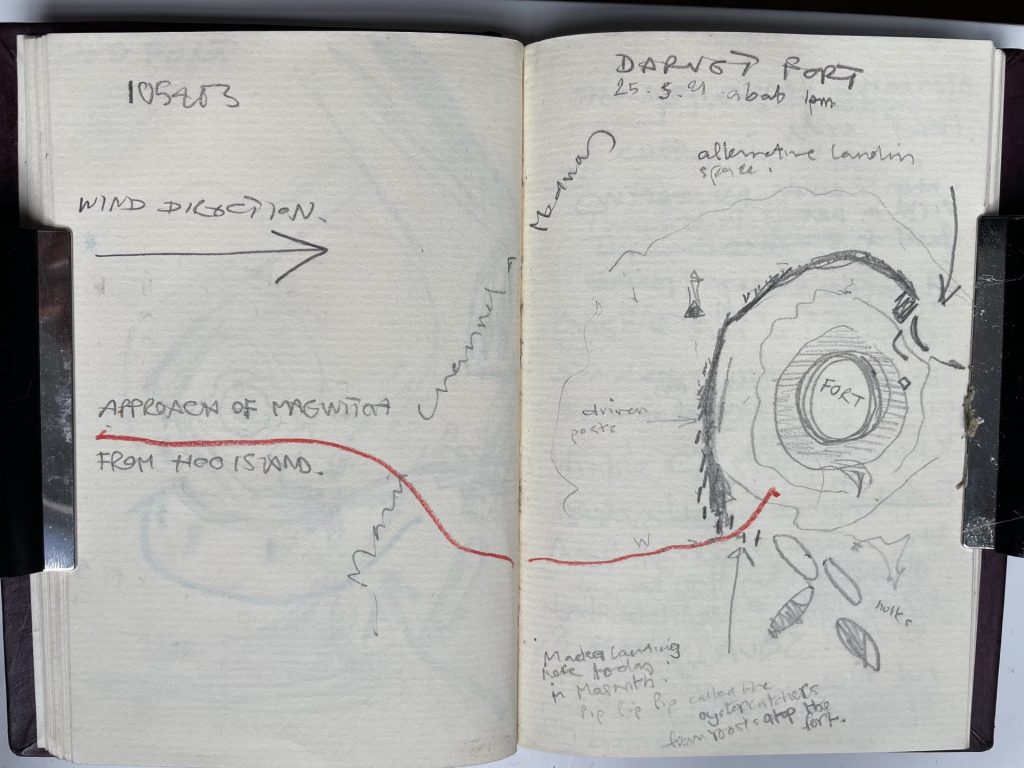
Collecting

Carol was thrilled to find an almost complete clay pipe as we slowly combed the salt marsh, tuning in to the colours and shapes of the ground below our feet to identify anything out of the ordinary. I got a distinct second prize with a 19th century glass bottle stopper, but contented myself in the end, with a colourful collection of plastic rings – including bottle tops, ring pulls, pipes, washers, a pen and shotgun cartridge. It was good in this small fashion to help de-litter the foreshore and focus my mind on the conceptual circles and cycles of moon and tide which they interfere with and injure. We have now both got our souvenirs of times past and present.
In another 200 years will some future beachcomber pounce with relish on a rare sprite bottle cap in the same way we now love to find the waste and litter of yesteryear? Or will our hunger for petroleum based products so raise global temperatures that there will be no Medway marsh islands left to walk on at all, nor space for the already declining wildfowl to breed or roost.
